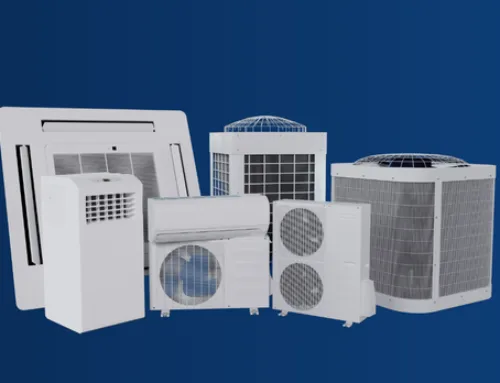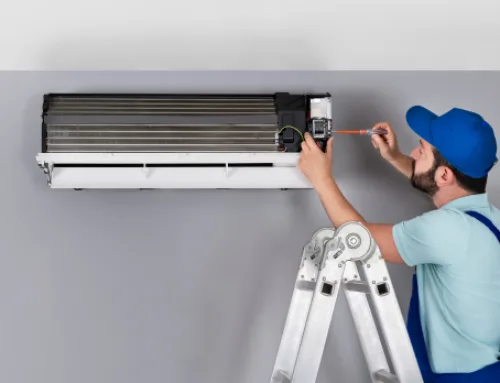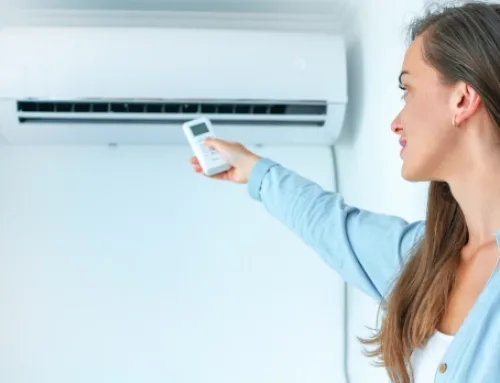Maintaining your furnace regularly is crucial to ensure its efficiency and longevity. Regular maintenance not only keeps your furnace running smoothly but also helps prevent costly breakdowns.
In this blog post, we’ll discuss why furnace maintenance is essential, the benefits of regular maintenance, a 12-point annual maintenance checklist, and how often you should perform maintenance.
Let’s get started.
Why is Furnace Maintenance Essential?
Regular furnace maintenance is essential for several reasons. First and foremost, it helps ensure that your furnace is running efficiently, which can save you money on your energy bills. A well-maintained furnace operates more efficiently, meaning it uses less energy to heat your home. This not only saves you money but also reduces your carbon footprint.
Secondly, regular furnace maintenance can help prevent costly breakdowns. By identifying and fixing minor issues before they become major problems, you can avoid the inconvenience and expense of a furnace breakdown in the middle of winter.
Benefits of Regular Furnace Maintenance
There are several benefits of doing regular furnace maintenance. Let’s check them out.
- Improved Efficiency: A well-maintained furnace operates more efficiently, saving you money on your energy bills.
- Increased Lifespan: Regular maintenance can extend the lifespan of your furnace, saving you money on premature replacement.
- Improved Indoor Air Quality: Regular maintenance includes cleaning and inspecting the furnace components, which can improve the indoor air quality in your home.
- Enhanced Safety: Regular maintenance helps ensure that your furnace operates safely, reducing the risk of carbon monoxide leaks and other safety hazards.
Essential Annual Furnace Maintenance Checklist
Let’s now check the 12-point furnace maintenance checklist.
Check Air Filter
Regularly replacing or cleaning the air filter is crucial to maintain optimal airflow. A clogged filter restricts airflow and forces the furnace to work harder and consume more energy. This simple maintenance task can significantly improve efficiency, reduce energy bills, and prolong the lifespan of your furnace.
Check and Clean the Burner
Inspecting and cleaning the burner is essential for efficient combustion. A dirty burner can cause incomplete combustion, leading to soot buildup and decreased furnace efficiency. Cleaning the burner ensures proper airflow and fuel mixture. It optimizes performance and reduces the risk of carbon monoxide leaks.
Check Thermostat Operation
The thermostat regulates the furnace’s operation, so it’s important to ensure it’s working correctly. A malfunctioning thermostat can lead to uneven heating, higher energy bills, and unnecessary wear on the furnace. Testing the thermostat ensures it accurately reads and responds to temperature settings that keep your home comfortable and efficient.
Check and Clean Ductwork
Inspecting and cleaning the ductwork is crucial for maintaining proper airflow through the furnace. Blocked or dirty ducts can restrict airflow, reduce the furnace’s efficiency, and cause uneven heating. Cleaning the ducts removes dust, debris, and other obstructions, ensuring optimal performance and indoor air quality.
Check and Adjust the Gas Valve
The gas valve controls the flow of fuel to the burner, so it’s important to ensure it’s opening and closing properly. An improperly adjusted gas valve can lead to inefficient combustion, higher energy bills, and potential safety hazards. Checking and adjusting the gas valve ensures the correct fuel flow for efficient heating.
Clean the Heat Exchanger and Check for Cracks or Leaks
The heat exchanger transfers heat from the burner to the air, so it’s essential to keep it clean. A dirty or damaged heat exchanger can reduce efficiency and pose a safety risk. Cleaning the heat exchanger removes buildup while inspecting for cracks or leaks ensures safe and efficient operation.
Check and Clean the Blower Motor
The blower motor circulates air throughout the ductwork, so it’s important to keep it clean and well-maintained. A dirty or malfunctioning blower motor can reduce airflow and cause the furnace to work harder and consume more energy. Cleaning and inspecting the blower motor ensures optimal performance and efficiency.
Check for Burnt Wires
Inspecting the furnace for burnt wires is essential for preventing electrical issues. Burnt wires can indicate a short circuit or other electrical problem, which can lead to furnace malfunctions or even fires. Checking for burnt wires and replacing them if necessary helps ensure safe and reliable furnace operation.
Inspect the Flue Pipe
The flue pipe removes exhaust gases from the furnace, so it’s important to inspect it for blockages or leaks. Blocked or leaking flue pipes can lead to carbon monoxide buildup, posing a serious safety hazard. Inspecting the flue pipe ensures safe and efficient operation of the furnace.
Lubricate All Moving Parts
Lubricating moving parts reduces friction and wear, extends their lifespan, and ensures smooth operation. Proper lubrication also helps maintain efficiency and prevents breakdowns. Lubricating all moving parts as part of regular furnace maintenance helps keep your furnace running smoothly and efficiently.
Check Safety Controls
Testing the safety controls is essential for ensuring the furnace operates safely. Safety controls monitor the furnace’s operation and shut it down if an unsafe condition is detected. Testing the safety controls ensures they are functioning correctly and provides safety for your home.
Tune the Pilot Light System
Tuning the pilot light system ensures it provides a steady, reliable flame for efficient ignition. A properly tuned pilot light system helps maintain efficient furnace operation, reduces energy consumption, and ensures reliable heating. Tuning the pilot light system as part of regular maintenance helps keep your furnace running efficiently and safely.
Signs That Indicate You Need Furnace Maintenance
Let’s now check the signs that your furnace needs repair or maintenance.
- No Heat from Registers: If you’re not getting any heat from your registers, it could indicate a problem with your furnace.
- Higher Energy Bills: A sudden increase in your energy bills could indicate that your furnace is not operating efficiently.
- Unusual Smell From the Furnace: A strange smell coming from your furnace could indicate a problem.
- Loud or Unusual Noises: Loud or unusual noises coming from your furnace could indicate a mechanical issue.
- Furnace Turns On and Off Frequently: If your furnace is cycling on and off frequently, it could indicate a problem with the thermostat or the furnace itself.
How Often Should You Perform Furnace Maintenance?
It is recommended to perform furnace maintenance at least once a year, preferably before the start of the heating season. However, if you have an older furnace or if you notice any of the signs mentioned above, you may need to perform maintenance more frequently.
Final Words
Regular furnace maintenance is essential to ensure your furnace’s efficiency, longevity, and safety. By following the annual maintenance checklist and keeping an eye out for signs that indicate the need for maintenance, you can keep your furnace running smoothly and avoid costly breakdowns.
If you’re unsure about how to perform furnace maintenance, it’s always best to consult a professional.
Infiniti Home Comfort offers reliable furnace installation and repair services for more than 15 years. We can help you with efficiently diagnosing and repairing your furnace. If you need assistance with your furnace, feel free to contact us.




